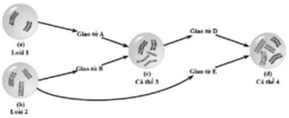Read the following passage and mark the letter A, B, C or D to indicate the correct answer to each of the questions from 43 to 50.
The need for a surgical operation, especially an emergency operation, almost always comes as a severe shock to the patient and his family. Despite modern advances, most people still have an irrational fear of hospitals, and anaesthetics. Patients do not often believe they really need surgery - cutting into a part of the body as opposed to treatment with drugs.
In the early years of the 20th century there was little specialization in surgery. A good surgeon was capable of performing almost every operation that had been advised up to that time. Today the situation is different. Operations are now being carried out that were not even dreamed of fifty years ago. The heart can be safely opened and its valves repaired. Clogged blood vessels can be cleaned out, and broken ones mended or replaced. A lung, the whole stomach, or even part of the brain can be removed and still permit the patient to live comfortable and satisfactory life. However, not every surgeon wants to, or is qualified to carry out every type of modern operation.
The scope of surgery has increased remarkably in the past decades. Its safety has increased too. Deaths from most operations are about 20% of what they were in 1910 and surgery has been extended in many directions, for example to certain types of birth defects in new born babies, and, at the other end of the scale, to life saving operations for the octogenarian. The hospital stay after surgery has been shortened to as little as a week for most major operations. Most patients are out of bed on the day after an operation and may be back at work in two or three weeks.
Many developments in modern surgery are almost incredible. They include replacement of damaged blood vessels with simulated ones made of plastic: the replacement of heart valves with plastic substitutes; the transplanting of tissues such as lens of the eye; the invention of the artificial kidney to clean the blood of poisons at regular intervals and the development of heart and lung machines to keep patients alive during very long operations. All these things open a hopeful vista for the future of surgery.
One of the most revolutionary areas of modem surgery is that of organ transplants. Until a few decades ago, no person, except an identical twin, was able to accept into his body the tissues of another person without reacting against them and eventually killing them. Recently, however, it has been discovered that with the use of X-rays and special drugs, it is possible to graft tissues from one person to another which will survive for periods of a year or more. Kidneys have been successfully transplanted between non-identical twins. Heart and lung transplants have also been reasonably successful.
"Spare parts" surgery, the simple routine replacement of all worn-out organs by new ones, is
still a dream of the future but surgery is ready for such miracles. In the meantime, you can be happy if your doctors say to you, "Yes, I think it is possible to operate on you for this condition."
Which of the following has the same meaning as "vista" in the fourth paragraph?'
A. support
B. prospect
C. history
D. visit










 :
: